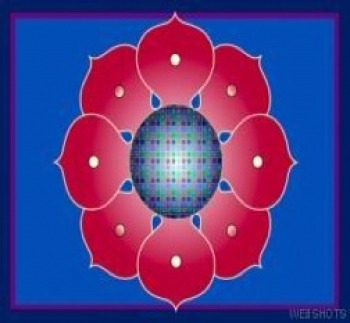The Heart Sutra (the shortest of the Prajnaparamita body of scriptures) needs almost no introduction. It represents for many Buddhists the most recognizable treasure of Mahayana literature, a text that shudders with unfathomable profundity in every single word. From its opening of Avalokiteshvara's insight into the emptiness of all phenomena to its climatic mantra of gate gate parasamgate bodhi svaha, the Heart Sutra is a beloved composition of high philosophy that has changed lives and enriched whole cultures. Here, Lok Sang Ho has completed his own translation of this precious text. It is a faithful and accurate rendition of the Chinese, and should join the many other English translations that have helped to make the Heart Sutra more accessible to an international readership.
FEATURES|VEHICLES|Mahayana
The Heart Sutra: A New Translation

It dawned upon Bodhisattva Avalokiteshvara, in his practice of deep wisdom, that all the five elements of the human life are totally devoid of intrinsic qualities (“empty”), and that herein lies the insight that can bring cessation to all suffering.
(Speaking to Shariputra, a top disciple of Shakyamuni Buddha, the Bodhisattva proclaims) “O Shariputra, the physical body is the same as emptiness; emptiness is the same as the physical body. The physical body is no different from emptiness; Emptiness is no different from the physical body.
“The same applies also to all the mental elements of the human life, including reception, thinking, activity, and distinction.
“Such emptiness of all that is experienced in phenomenal world knows no beginning and knows no end, is beyond purity and impurity, and neither increases nor decreases.
“For this reason one cannot distinguish, within emptiness, the physical body, the faculty of sensory reception, that of thinking, activity, or the distinguishing mind. Similarly one cannot distinguish the eyes, the ears, the nose, the tongue, the body, or the mind. And the same emptiness also applies to what is seen, what is heard, what is tasted, what is touched, and what is thought upon, and extending to the entire spheres of sight, of sound, of taste, of touch, and of thought.
“Ignorance is empty, the cessation of ignorance is empty; aging and dying is empty; the cessation of aging and dying is empty; all the four noble truths about suffering, the cause of suffering, the cessation of suffering, and the way to end suffering are empty; wisdom is empty; achievement is empty. For there is nothing to be achieved.
“All the bodhisattvas, practicing the deep wisdom, have freed themselves from all mental encumbrances. Being free from all mental encumbrances, they have nothing to fear, they totally distance themselves from illusions and delusions, and they have achieved the ultimate nirvana.
“All the buddhas, past, present, and future, practice the deep wisdom and so achieve the highest, the true, and the final enlightenment.
“Thus we know that the deep wisdom, known as Prajnaparamita, is the powerful mantra, the mantra that brings light, the highest mantra, and the incomparable mantra. It can truly eliminate all suffering. So let the Prajnaparamita mantra be spoken:
Gaté,
gaté,
paragaté,
parasamgaté.
Bodhi!
Svaha!”
(Transcend,
Transcend,
Transcend beyond all,
Transcend completely.
Awaken! Let this be!)














